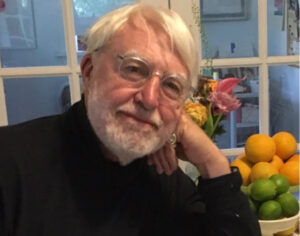
Ric Grefé, until recently the Design Thinker in Residence at Williams College, works at the intersection of business, society and creativity, applying the craft and optimism of human-centered design to the intractable challenges we face today.
Ric is director emeritus of AIGA, the professional association for design, which he led for 20 years. Prior to AIGA he served in naval intelligence in Asia; he was a journalist with AP and Time, and had his own consulting firm in urban design and public policy. He also led legislative strategy and strategic planning for public television and radio in Washington, DC. RIc has an undergraduate degree from Dartmouth and an MBA from Stanford. Currently, he serves as board chair of Britain’s Royal Society of Arts in the US. He is just down-right curious, so it’s hard to list a finite set of interests.
Ric is married to Karen Vogel, who is an artist and landscape designer (and formerly very active in the DCA Greenhouse). Their two grown children both graduated from Darien High School. They have lived in Darien for 25 years.
Arranged by Bryan Hooper
Bryan’s notes on the talk:
Ric Grefé, DMA member, talked about the application of design thinking in encouraging innovation in business strategies. He noted that business moved from being essentially production-driven to a more consumer-oriented approach as the information revolution developed in the 90s, and consequently refocused thinking from mass production to mass customization, concentrating on designing a product that real people want. Techniques for solving problems have been developed in line with this shift towards identifying and supplying products to meet the consumers’ needs. Providing quick answers based on past successes began to give way to slowing down the strategic planning process and involving a broader range of participants with varying experiences to determine more creative outcomes and innovative solutions. This brainstorming approach depends on being human-centered, collaborative, and utilizing divergent thinking, followed by producing prototype solutions, testing and iteration of the process. The novel technique concentrated initially on manufacturing product development, but has grown to being applied to services and organization strategy. Ric cited success in the use of design thinking in fields as varied as the approach to soldiering in Afghanistan to the redesign of ballots and steps in the election process for the Federal Election Commission.
Lack of time prevented Ric from diving deeper into his subject in terms of methodology and detailed examples, but a visit to the Williams College website will put more flesh on the subject. Go to the site listed below and click on the Resources listing at the top of the home page that comes up: williams.edu/designthinking. Additionally, Ric’s talk and slides can be found on our website at: https://youtu.be/7_-twb-6ywo.
